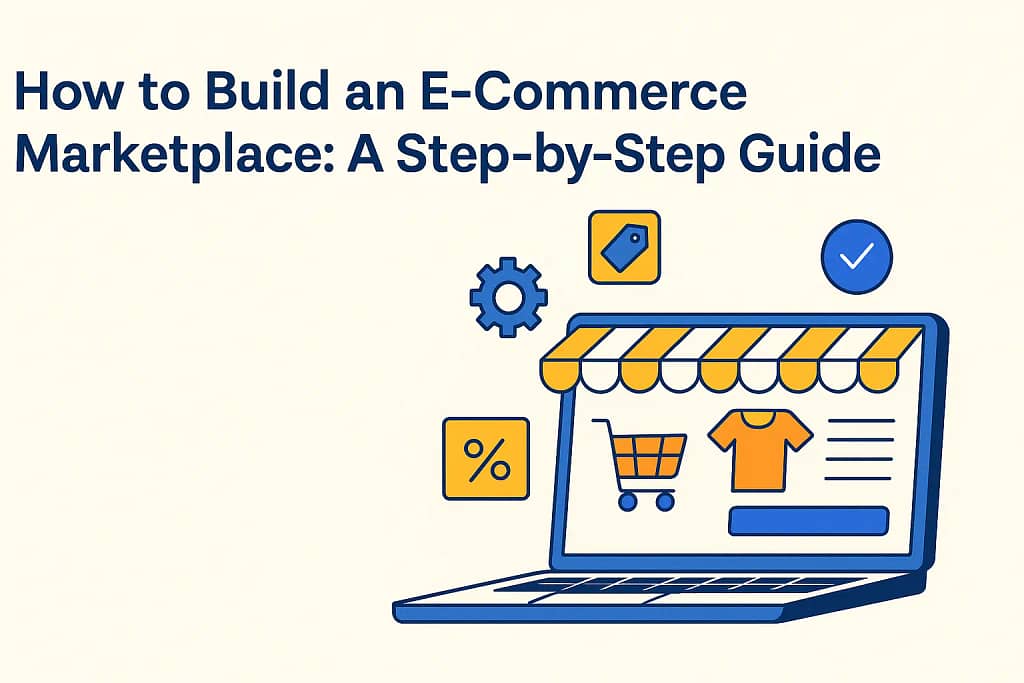The e-commerce industry has seen explosive growth over the past decade. With billions of people shopping online and businesses embracing digital transformation, launching an e-commerce marketplace has never been more promising. Whether you’re an entrepreneur looking for a scalable business model or a company seeking to expand online, now is the best time to build an online marketplace.
Unlike a traditional e-commerce store that sells products from a single vendor, an online marketplace connects multiple sellers with buyers under one digital roof. Think Amazon, Etsy, or eBay—these platforms have revolutionized how people buy and sell goods.
In this guide, we’ll walk you through the essentials of launching your own online marketplace, covering everything from choosing your model to launching and scaling your platform.
What is an Online Marketplace?
An online marketplace is a digital platform where multiple vendors sell goods or services to customers. The platform owner doesn’t usually own inventory but facilitates transactions between buyers and third-party sellers.
Key Features of Online Marketplaces:
- Multiple vendor support
- Product listings by different sellers
- Customer reviews and ratings
- Payment processing integration
- Order management system
Popular Examples:
- Amazon – A B2C and B2B giant where millions of third-party sellers list products.
- Etsy – Focused on handmade, vintage items and unique factory-manufactured products.
- eBay – A C2C platform known for auctions and consumer-to-consumer transactions.
How It Differs from Single-Vendor Stores:
A single-vendor e-commerce platform sells products from one company, whereas marketplaces allow a range of sellers to offer a wide variety of products. This model increases product diversity and potential for scaling.
Why Build an Online Marketplace?
Building an online marketplace offers multiple advantages for entrepreneurs, vendors, and consumers alike.
Benefits for Business Owners:
- Scalability: You can grow your platform without needing to manage inventory.
- Recurring Revenue: Commission-based models and subscription plans generate steady income.
- Wide Product Range: A variety of sellers means a broader catalog without direct procurement.
Benefits for Sellers and Buyers:
- Sellers gain access to a ready-made audience and powerful tools to manage their business.
- Buyers enjoy a diverse range of products, competitive pricing, and convenience.
Market Trends:
According to recent studies, global e-commerce sales are expected to hit $8.1 trillion by 2026. Digital marketplaces are expected to dominate, making this the ideal time to build an online marketplace that taps into evolving shopping behaviors and mobile-first experiences.
Key Types of Online Marketplaces
There are three main types of marketplaces, each serving different business needs:
1. B2C (Business-to-Consumer)
- Example: Amazon
- Model: Businesses sell directly to end-users.
- Use Case: Ideal if you want to connect brands or retailers with individual consumers.
2. B2B (Business-to-Business)
- Example: Alibaba
- Model: Companies sell in bulk to other businesses.
- Use Case: Best for wholesale platforms or supply chain services.
3. C2C (Consumer-to-Consumer)
- Example: eBay
- Model: Consumers sell to other consumers, often through auctions or fixed-price listings.
- Use Case: Great for platforms like secondhand marketplaces or peer-to-peer services.
Understanding your ideal model is crucial as it influences everything from your platform design to your marketing strategy.
Steps to Build an Online Marketplace
Now, let’s dive into how to build an online marketplace from scratch:
Step 1: Define Your Niche
Start by identifying a specific industry or product category. A niche like eco-friendly products, handmade crafts, or fitness gear helps you stand out and attract a loyal audience.
Step 2: Choose the Right Marketplace Model
Decide whether your platform will be B2C, B2B, or C2C. This decision impacts your payment system, vendor features, and user interface.
Step 3: Select a Technology Platform
You can:
- Build from scratch using frameworks like Laravel or Django.
- Use ready-made marketplace solutions like Sharetribe, Arcadier, or Magento Marketplace.
- Opt for custom development if you need full control over features and branding.
Step 4: Design a User-Friendly Interface
Focus on a responsive, easy-to-navigate interface for both buyers and sellers. Key components include:
- Product search and filtering
- Seller dashboards
- Secure checkout
- Ratings and reviews
Step 5: Set Up Vendor Management
Develop tools that allow vendors to:
- List products easily
- Manage inventory
- Track orders
- Communicate with customers
Also, set up clear onboarding, commission structures, and payout policies.
Step 6: Integrate Secure Payment Gateways
Offer multiple payment options (credit/debit cards, PayPal, Stripe) and ensure compliance with standards like PCI DSS to keep transactions secure.
Step 7: Implement Logistics and Fulfillment
Decide if:
- You’ll manage shipping (like Amazon FBA)
- Vendors handle their own logistics
- You’ll partner with third-party logistics providers
Step 8: Focus on Marketing and Growth
Use SEO, content marketing, social media, influencer outreach, and paid ads to attract buyers and onboard sellers. Build trust with customer support, transparent policies, and consistent branding.
Step 9: Analyze and Improve
Use analytics tools to monitor user behavior, conversion rates, and seller performance. Continuously iterate based on user feedback and data insights.
Final Thoughts
Creating an online marketplace is a strategic and rewarding endeavor. By choosing the right niche, developing a scalable platform, and offering a seamless user experience, you can establish a thriving digital marketplace that meets the needs of modern consumers and sellers.
As e-commerce continues to evolve, those who take the initiative to build an online marketplace today will be well-positioned to lead tomorrow’s digital economy.

